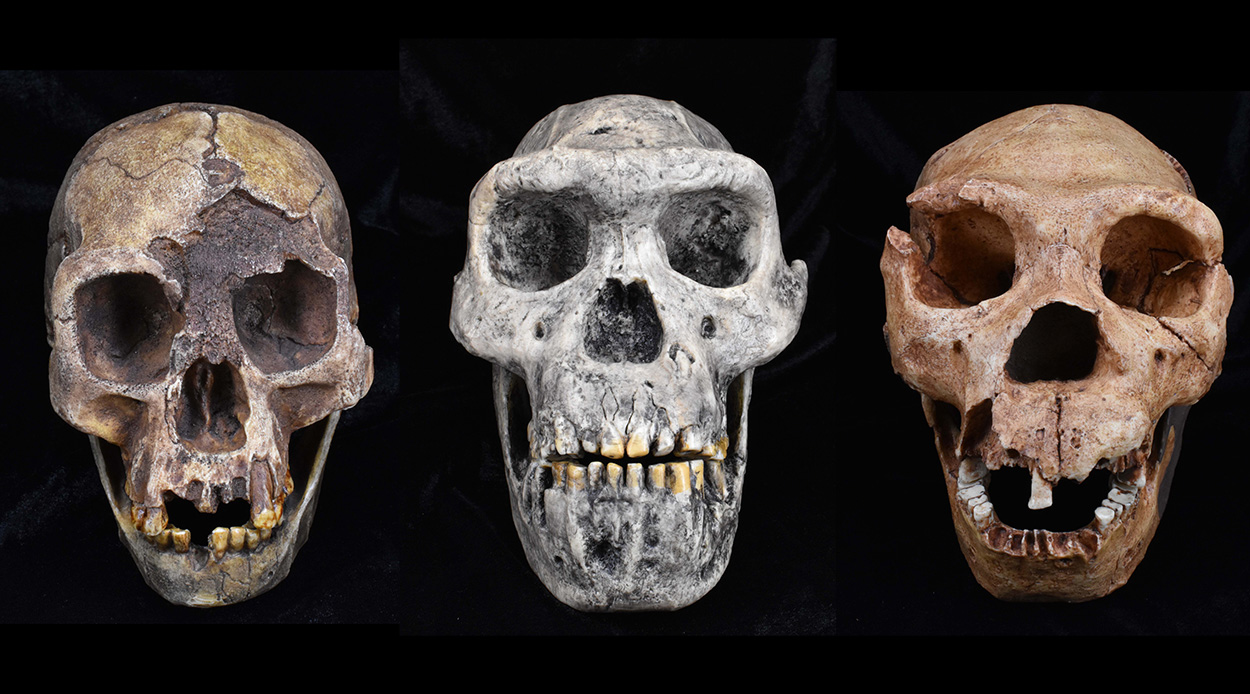Competition between different species plays an important role in the emergence and extinction of species during evolution. But did this also apply to our early human ancestors? A study showed that competition had a similar impact on pre-human species, such as Australopithecus and Co., as it does on other vertebrate species – but was less significant than climate changes. For the species Homo, from which we also emerged, an unusual pattern emerges: even when all ecological niches were apparently occupied, new species emerged that created new environments for themselves. Only when Homo sapiens emerged as the ultimate specialist did the other species die out.
The finches found by Charles Darwin (1809-1882) in the Galapagos Islands demonstrate an important principle of evolution: if there are many ecological niches in an area, different species emerge to fill these niches. For example, some finches have evolved powerful beaks for cracking nuts, while others have specialized in certain insects. If all ecological niches are filled, competition ensures that more species become extinct than are created. This principle explains important aspects of the evolution of many animal species.
A new look at the human family tree
“With respect to early humans, the focus to date has been on the effects of climate change when it comes to explaining why certain species emerged or went extinct,” write Laura van Holsteen and Robert Foley of the University of Cambridge. “On the other hand, the role of interspecific competition has received much less attention to date.”
In order to find out the extent to which hominins were also affected by competition with related species, the researchers analyzed the human family tree and used statistical models to calculate the extent to which species diversity and availability of natural resources were related to the emergence and extinction of species. In addition to seven members of the genus Homo, which also includes modern humans Homo sapiens, the team also included species from sister genera and predecessor species, including seven species of Australopithecus and three species of Paranthropus.
Technology opens up additional fields
In fact, at a pre-human stage, Australopithecus and Paranthropus showed a similar pattern of speciation to that of many other mammals. “The rate at which new species emerge initially increases and then stagnant, while from that point onward extinction rates increase. This suggests that competition between species was an important evolutionary factor,” explains van Holstein. “However, both species became extinct before they reached their calculated diversity threshold.” “This is consistent with climate playing a larger role in hominin extinction than interspecific competition,” the researchers say.
However, for the genus Homo, van Holstein and Foley discovered an unusual pattern: “The more Homo species there are, the higher the rate of speciation. As these niches filled up, something stimulated the emergence of more species. “This is almost unique in evolutionary science,” says van Holstein. One explanation for this extraordinary pattern may be the human ability to develop and use technologies. “The acquisition of stone tools, fire-hunting techniques, or condensation are very malleable behaviors,” says van Holstein. “Species that can take advantage of such technologies can quickly develop new niches and not have to remain sedentary for long periods of time while developing new body shapes.”
Driven by interspecific competition, combined with the ability to quickly adapt to new conditions, members of the Homo species have continued to expand their range, opening up new ecological niches and diversifying into ever new species. But why did all species gradually become extinct except Homo sapiens? Was it because Homo sapiens, as the ultimate generalist, was able to survive in almost all of the ecological niches previously used by other early human species, thus displacing its sister species? Or did climate have a greater influence here as well? “These are new questions raised by our results,” van Holsteen and Foley wrote.
Source: Laura van Holsten (University of Cambridge, UK) et al., Nature Ecology and Evolution, doi: 10.1038/s41559-024-02390-z

“Alcohol buff. Troublemaker. Introvert. Student. Social media lover. Web ninja. Bacon fan. Reader.”







More Stories
Why is a rooster crowing viewed as a noise nuisance?
Strange pattern in inorganic compounds
This vitamin is missing from muscle pain